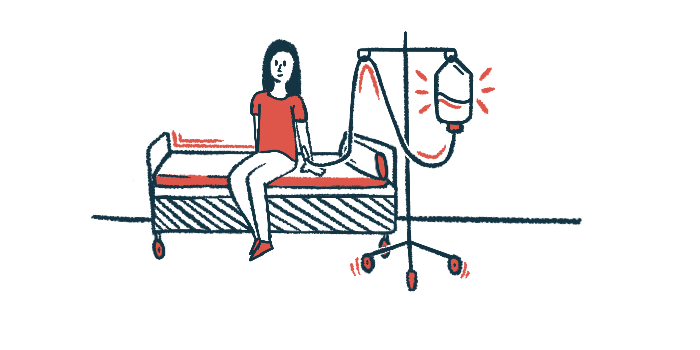Enjaymo re-treatment deemed safe, effective in Japanese OLE study
Restarting therapy restored CAD markers to levels before it was stopped
Written by |

Restarting Enjaymo (sutimlimab) after stopping it for up to four months was generally safe and brought blood markers of cold agglutinin disease (CAD) back to levels before its cessation.
These are the findings of a Japanese open-label extension (OLE) study wherein seven CAD patients who completed one of the two Phase 3 clinical trials that supported Enjaymo’s approvals re-started the therapy for up to about a year. Safety results, covering up to four years of treatment with a cessation period in between, showed no new concerns.
While the number of patients was small, “considering that CAD is a rare disease, any data of relatively few patients that are added to globally available data may provide insights into future clinical practice,” the researchers wrote.
The study, “Long-term safety profile of sutimlimab in adult Japanese patients with cold agglutinin disease,” was published in the International Journal of Hematology.
In CAD, self-reactive antibodies called cold agglutinins mistakenly attach to red blood cells at cold temperatures, tagging them for hemolysis, that is, destruction. This can result in anemia, which is classified as fewer than normal red blood cells or low levels of hemoglobin, the protein in red blood cells that transport oxygen throughout the body.
Enjaymo, the only approved therapy for CAD, is an antibody that blocks the activation of C1, a protein that’s part of the cascade of events that leads to hemolysis in CAD. The treatment is given directly into the bloodstream, starting with weekly doses for two weeks, followed by dosing every other week.
Approvals were based on data from CARDINAL (NCT03347396) and CADENZA (NCT03347422), where Enjaymo was shown to be superior to a placebo at preventing hemolysis, increasing hemoglobin levels, and reducing the need for blood transfusions.
Safety, effectiveness of Enjaymo in Japanese OLE
Data from the trials’ OLE portion, where all the participants received the therapy, further supported Enjaymo’s long-term favorable safety profile and sustained benefits for up to 2.5 years. After completing the extension, participants in both trials were followed for nine weeks without treatment.
The separate Japanese OLE study was meant to provide continuous Enjaymo treatment to CAD patients who’d completed CARDINAL or CADENZA until its approval in that country, and to evaluate the therapy’s long-term effects.
The study included seven patients (71.4% women) who were a median age of 70. Three were CARDINAL participants who had a history of blood transfusion within six months of enrolling and four were CADENZA participants with no such history. The patients received Enjaymo for a median of 140.9 weeks, or about 2.7 years, in CARDINAL/CADENZA, and had been off the treatment for a median of 70 days and up to 133 days, or about four months, before entering the Japanese OLE, where all were treated with Enjaymo for a median of 47.1 weeks, or nearly a year.
During the CARDINAL or CADENZA study, three patients (42.9%) had treatment-related side effects, such as injection site reactions, infections, and increased blood pressure.
In the Japanese OLE, all the patients had at least one adverse event, but only one, a nonserious and mild urinary tract infection that resolved with medication, was considered related to Enjaymo. One patient stopped treatment due to serious adverse events related to chronic kidney disease worsening and died of kidney failure nearly a month after the last dose. These events weren’t deemed related to the therapy. The remaining six patients switched to commercially available Enjaymo after its approval in Japan.
Regarding efficacy data, blood levels of hemoglobin increased and those of bilirubin, a hemolysis marker, decreased with Enjaymo during the CARDINAL and CADENZA studies. These levels reversed during the cessation period and then returned to levels in the Phase 3 trials after nearly a year of re-treatment in the OLE.
“In general, all patients exhibited deterioration in the anemic and hemolytic markers after discontinuation of sutimlimab … However, these levels were restored during the Japan OLE study,” the researchers wrote.
No patient needed a blood transfusion during the Japanese OLE.
“In conclusion, [Enjaymo] was generally well tolerated over a median 3.8 years of the long-term observation period including re-treatment and no new safety concerns were identified,” wrote the researchers, who noted the study was limited to a few patients in Japan, which may limit generalizing the results to other clinical settings.





